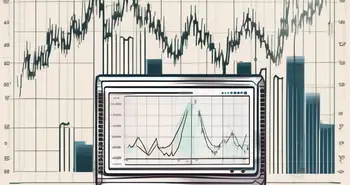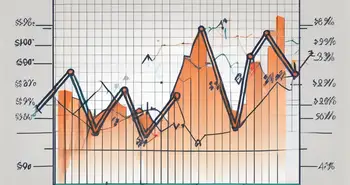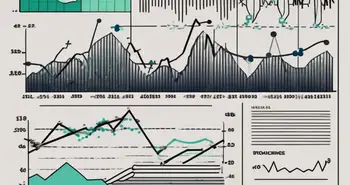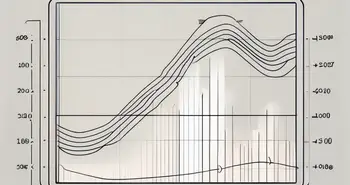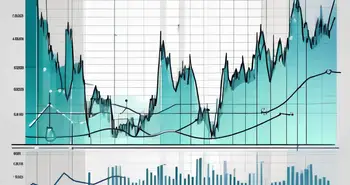Exploring the Klinger Oscillator: A Comprehensive Guide
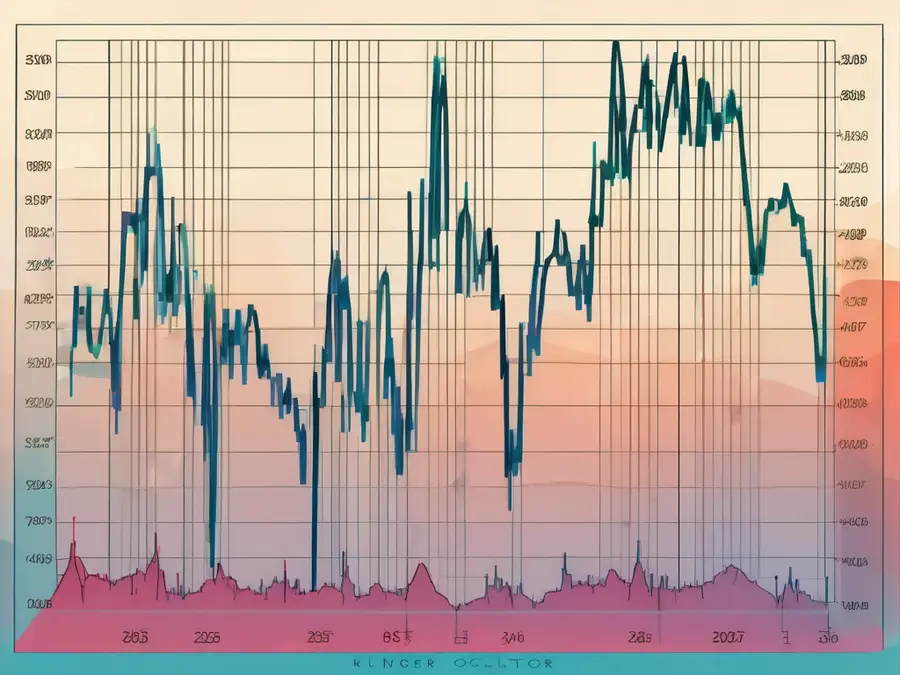
As an expert in technical analysis, I am here to guide you through the world of the Klinger Oscillator. This powerful indicator has become a favorite among traders and investors alike, thanks to its ability to identify trend reversals and provide insightful signals. In this comprehensive guide, we will delve deep into the workings of the Klinger Oscillator, uncovering its origin, understanding its components, and exploring its applications in analyzing market trends. So, buckle up and let the journey begin!
Understanding the Klinger Oscillator
The Klinger Oscillator is a technical analysis tool developed by Stephen Klinger in the early 1990s. Its primary purpose is to measure the long-term volume trend of a security by comparing the on-balance volume (OBV) with its moving average. By doing so, it helps traders gauge the overall market sentiment and potential trend reversals.
Origin and Development of the Klinger Oscillator
The Klinger Oscillator was born out of Stephen Klinger's desire to create a volume-based indicator that could provide more accurate signals than traditional volume indicators. After years of rigorous research and testing, Klinger developed this oscillator to overcome the limitations of other volume indicators and provide traders with a reliable tool to analyze market trends.
Key Components of the Klinger Oscillator
To fully grasp the Klinger Oscillator, it is essential to understand its key components. The oscillator consists of two main lines: the Klinger Oscillator line and the Klinger Trigger line. The Klinger Oscillator line represents the difference between the 34-period and 55-period exponential moving averages of the OBV, smoothing out the inherent volatility. The Klinger Trigger line is a 13-period exponential moving average of the Klinger Oscillator line, providing timely signals when it crosses above or below the Klinger Oscillator line.
The Mathematics Behind the Klinger Oscillator
Under the hood of the Klinger Oscillator lies a mathematical formula that drives its calculations and generates the oscillating values. The formula breaks down the volume into two components: Accumulation and Distribution (A/D). Calculating these components helps identify whether a security is being accumulated or distributed, shedding light on the market sentiment and potential trend reversals.
The Oscillator Formula Explained
The formula behind the Klinger Oscillator may seem complex at first, but let me simplify it for you. The formula is as follows:
Klinger Oscillator = (34-period EMA of A/D) – (55-period EMA of A/D)
This difference between the two exponential moving averages is plotted as a histogram, oscillating around the zero line. Positive values indicate buying pressure (accumulation), while negative values suggest selling pressure (distribution).
Understanding Signal and Trigger Lines
The Klinger Oscillator becomes even more powerful when we introduce the signal and trigger lines. The signal line is calculated as a 13-period exponential moving average of the Klinger Oscillator line. When the Klinger Oscillator line crosses above the signal line, it generates a bullish signal, indicating a potential upward trend. Conversely, when it crosses below the signal line, it generates a bearish signal, signaling a potential downward trend.
Interpreting the Klinger Oscillator
Now that we have a good grasp of the inner workings of the Klinger Oscillator, let's explore how to interpret its signals and make the most of this powerful tool in our trading strategies.
Reading Oscillator Divergences
One of the key strengths of the Klinger Oscillator is its ability to detect divergences between price action and volume. When the oscillator diverges from the price, it often indicates an impending reversal. For example, if the price is making higher highs, but the Klinger Oscillator is making lower highs, it suggests weakening buying pressure and a potential trend reversal to the downside.
Identifying Overbought and Oversold Conditions
In addition to divergences, the Klinger Oscillator can also help identify overbought and oversold conditions in the market. When the oscillator reaches extreme highs, it signals overbought conditions and implies a higher probability of a price correction in the near future. On the other hand, when the oscillator plunges to extreme lows, it suggests oversold conditions and indicates a potential bounce or reversal in price.
The Klinger Oscillator and Market Trends
Understanding the relationship between the Klinger Oscillator and market trends is crucial for maximizing its potential. Let's take a deep dive into how the oscillator reflects market trends and how you can use it to predict market direction with confidence.
How the Oscillator Reflects Market Trends
The Klinger Oscillator is particularly adept at identifying the strength and sustainability of a market trend. When the oscillator is in a positive territory and rising, it confirms an ongoing bullish trend. Conversely, when the oscillator is negative and falling, it confirms a bearish trend. By analyzing the slope and magnitude of the oscillator, you can gauge whether a trend is gaining strength or waning, aiding in timely entry and exit decisions.
Using the Oscillator for Predicting Market Direction
One of the most practical applications of the Klinger Oscillator is its ability to predict market direction. When the oscillator crosses above the zero line, it generates a buy signal, suggesting a shift from selling pressure to buying pressure. On the other hand, when the oscillator crosses below the zero line, it generates a sell signal, indicating a switch from buying pressure to selling pressure. These signals can help traders navigate the ever-changing market landscape with clarity and confidence.
The Klinger Oscillator vs Other Technical Indicators
No technical analysis tool exists in isolation, and it is essential to understand how the Klinger Oscillator stacks up against other popular indicators. Let's compare the Klinger Oscillator with two other widely used technical indicators: the Moving Average Convergence Divergence (MACD) and the Relative Strength Index (RSI).
Comparing the Klinger Oscillator and Moving Average Convergence Divergence (MACD)
Both the Klinger Oscillator and the MACD are trend-following indicators that help identify potential trend reversals and momentum shifts. However, the Klinger Oscillator places a stronger emphasis on volume analysis, providing unique insights into market sentiment and confirming divergences between volume and price. The MACD, on the other hand, primarily focuses on the relationship between two moving averages and provides signals based on their crossovers.
The Klinger Oscillator and Relative Strength Index (RSI): A Comparison
While the Klinger Oscillator focuses on volume analysis, the RSI is a momentum oscillator that measures the speed and change of price movements. The RSI is particularly helpful in identifying overbought and oversold conditions and generating potential reversal signals. In contrast, the Klinger Oscillator combines volume and price analysis, allowing traders to assess trend strength, potential reversals, and market direction.
You can trust my expertise in the Klinger Oscillator, as I have personally utilized this powerful tool in my trading journey. The Klinger Oscillator has not only provided me with valuable insights but has also helped me profitably navigate through various market conditions. If I were to offer one piece of advice, it would be to combine the Klinger Oscillator with other technical indicators and your own analysis to increase the chances of accurate predictions and successful trades.
FAQ
What is the Klinger Oscillator?
The Klinger Oscillator is a technical analysis tool that measures the long-term volume trend of a security by comparing the on-balance volume (OBV) with its moving average. It helps traders gauge market sentiment and identify potential trend reversals.
How does the Klinger Oscillator work?
The Klinger Oscillator calculates the difference between the exponential moving averages of the Accumulation and Distribution (A/D) components of volume, resulting in an oscillating histogram. Positive values indicate buying pressure, while negative values suggest selling pressure.
How can the Klinger Oscillator help in analyzing market trends?
The Klinger Oscillator reflects market trends by confirming bullish or bearish sentiment. When the oscillator is positive and rising, it confirms a bullish trend. Conversely, when it is negative and falling, it confirms a bearish trend. Analyzing the oscillator's slope and magnitude helps gauge trend strength and potential reversals.
What are some practical applications of the Klinger Oscillator?
The Klinger Oscillator can be used to identify oscillator divergences, overbought and oversold conditions, and predict market direction. It helps traders make informed decisions regarding entries, exits, and potential price reversals.
How does the Klinger Oscillator compare to other technical indicators like the MACD and RSI?
While the Klinger Oscillator, Moving Average Convergence Divergence (MACD), and Relative Strength Index (RSI) are all valuable technical analysis tools, they have distinct focuses. The Klinger Oscillator emphasizes volume analysis, providing unique insights into market sentiment and divergences between volume and price. The MACD primarily focuses on moving average crossovers, while the RSI measures price momentum.
Now that you have a comprehensive understanding of the Klinger Oscillator, it's time to put your knowledge into action. Incorporate this powerful tool into your technical analysis toolkit, and watch as it enhances your trading strategies and helps you navigate the markets with confidence!
Ready to take your trading to the next level with the insights gained from the Klinger Oscillator? Discover the innovative world of Morpher, where cutting-edge blockchain technology meets trading. With zero fees, infinite liquidity, and the ability to engage in fractional investing and short selling, Morpher.com is the ultimate platform for traders who demand more. Experience the safety and control of a non-custodial wallet, amplify your trades with up to 10x leverage, and explore unique markets like never before. Don't miss out on this revolutionary trading experience. Sign Up and Get Your Free Sign Up Bonus today, and join the future of investing with Morpher.

Disclaimer: All investments involve risk, and the past performance of a security, industry, sector, market, financial product, trading strategy, or individual’s trading does not guarantee future results or returns. Investors are fully responsible for any investment decisions they make. Such decisions should be based solely on an evaluation of their financial circumstances, investment objectives, risk tolerance, and liquidity needs. This post does not constitute investment advice.

Painless trading for everyone
Hundreds of markets all in one place - Apple, Bitcoin, Gold, Watches, NFTs, Sneakers and so much more.

Painless trading for everyone
Hundreds of markets all in one place - Apple, Bitcoin, Gold, Watches, NFTs, Sneakers and so much more.

